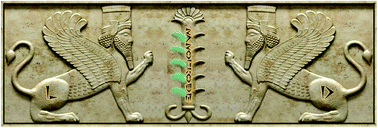- English
- فارسی
Optical nanoprobes for chiral discrimination-A review

A. Bigdeli, F. Ghasemi, N. Fahimi-Kashani, S. Abbasi-Moayed, A. Orouji, Z. Jafar-Nezhad Ivrigh, F. Shahdost-Fard and M. R. Hormozi-Nezhad
Chiral discrimination has always been a hot topic in chemical, food and pharmaceutical industries, especially when dealing with chiral drugs. Enantiomeric recognition not only leads to better understanding of the mechanism of molecular recognition in biological systems, but may further assist in developing useful molecular devices in biochemical and pharmaceutical studies. By emerging nanotechnology and exploiting nanomaterials in sensing applications, a great deal of attention has been given to the design of optical nanoprobes that are able to discriminate enantiomers of chiral analytes. This review explains how engineering nanoparticles (NPs) with desired physicochemical properties allows developing novel optical nanoprobes for chiral recognition. Fundamental concepts related to the origin of chirality in NPs have been briefly presented. Colorimetric and fluorimetric assays in which different types of chiral NPs are used for enantioselective recognition, have been comprehensively described. The main types of nanomaterials described in this review consist of luminescent quantum dots (QDs), carbon dots (CDs), silicon NPs and metal nanoclusters (NCs), as well as plasmonic nanostructures. The mechanisms of sensing in these NP-based optical chiral assays along with relevant examples have been also discussed. Finally, the remaining challenges and future directions have been provided for researchers interested in this topic.
